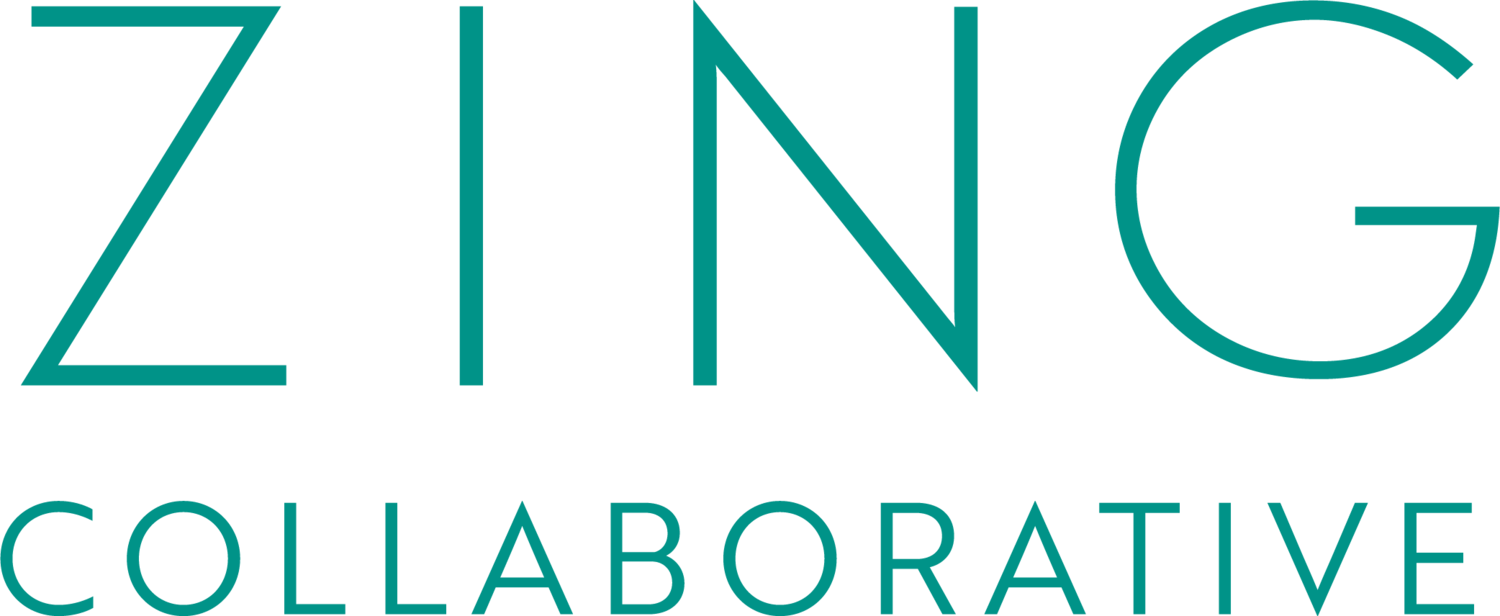ESCAPING THE ENDLESS CYCLE OF YES
Saying yes too much. Difficulty saying no. Overcommitting. Prioritizing other people’s priorities over your own. Becoming stretched too thin. Taking on the project because other people dropped the ball. Over-serving the committee because none of the other volunteers follow through. Expressing interest in something and then suddenly finding yourself in charge of it. Saying yes to an opportunity because it’s amazing, but then wondering when the heck you’re going to fit it in.
Anyone else struggle with one or more of these things?
If you do, I hear you. I see you. I get you. My natural tendency is to do these things too. I quickly see possibility and potential in any given situation, which means that in my mind I quickly jump from where we are right now to where we could be in the future. It also means that sometimes, in the moment when the opportunity presents itself, I overlook the steps in between - for example, how long it might take to get there or what else I have on my plate. As you can imagine, this has gotten me into trouble on more than one occasion.
It is a constant, daily (sometimes hourly) practice for me to work with my natural tendency (seeing possibility, potential, what’s possible, allowing myself to be excited and enthusiastic about all of this) while also incorporating everyday realities such as time, capacity, and scheduling.
This is not a post about saying no more, or saying yes less. Rather, it is a post about moving from, as Greg McKeown says, the trivial many to the essential few. It is a post about saying yes in a way that aligns with your values and your priorities. And it is a post about remembering that we are the creators of our own life, versus allowing others - or our inboxes or our friends or other on the committee - to control it for us.
Here are some strategies I use in this ongoing pursuit to align my time with my values; my priorities with my calendar; and my decisions with my core purpose in this world.
WAIT AT LEAST 24 HOURS BEFORE RESPONDING TO ANY NEW OPPORTUNITIES.
First, this provides time to check this opportunity against my values and reflect on the following questions:
Is it in line with my values?
Would this opportunity be moving me toward my vision?
Is it in line with my priorities for the year?
It also allows me time to think about my capacity and bandwidth, and also the tradeoff costs.
Do I have time to take this on?
If I say yes to this, what will I need to say no to?
When will I have time to do this? And is it in line with the timing of the opportunity or event?
Do I actually have time, or would I be trying to squeeze it in?
ASK MYSELF: IF THIS OPPORTUNITY WOULDN’T HAVE COME TO ME FROM ELSEWHERE, WOULD I HAVE ACTIVELY PURSUED IT ON MY OWN?
This, of course, can be a particularly challenging question as a business owner, and especially for new business owners who are working to build their businesses.
“No but…..it’s a good opportunity….” But is it a great opportunity? Is it aligned with the work you most want to do in the world and the people you most want to serve?
In the beginning, as new business owners and entrepreneurs, as long as the opportunities are aligned, I tend to recommend being more generous with what you say yes to. This provides an opportunity to try out various things, work with several different types of clients, and learn more about what you like (and what you don’t). And then, as your business grows, you can use these early experiences to shape future decisions and areas of focus.
That said, if the only reason you are saying yes is “to get more business” or “to generate referrals” or something gross like that, I suggest revisiting. It should also be fun, or interesting, or an opportunity to work with fabulous people.
If you are approached about joining a board or a committee, ask the same question. While flattering to receive the invite, is this the cause you care deeply about? Is this the way you want to invest your time and energy? Are the people on the board ‘stunning colleagues’ who you will be excited to gather with each month or each quarter?
IS THE OPPORTUNITY A HELL YEAH?
Is the opportunity a Hell Yeah on its own? If not, what would make it a Hell Yeah? And if you can’t think of anything that would make it a Hell Yeah, is it really worth saying yes to?
As Derek Sivers famously said, “if it’s not a Hell Yeah," it’s a no.”
The way I like to look at this is a Big Yes or a Little Yes. The Big Yes is aligned with our values, our vision, our priorities. The little yes comes from a place of ‘should’ or obligation.
As new opportunities come your way, ask yourself if it’s a Hell Yeah. If you can’t think of any conditions under which it would be a Hell Yeah, if it isn’t already, then you likely have your answer.
WHAT ARE THE CONDITIONS/TERMS UNDER WHICH I WOULD LOVE TO SAY YES?
Related to the above, if it isn’t a Hell Yeah, is there anything that would make it worth it?
For example, for new entrepreneurs or business owners, the truth is that every single project might not be a Hell Yeah. And, at the same time, one must eat.
So, for my clients who are navigating this situation (“It isn’t a Hell Yeah, but I need to eat…”) we often come up with a set of criteria that will make the opportunity worth it. This could involve the structure, the timing, the price, or perhaps a combination of the above. It might mean, for example, proposing a fall versus spring timeline to allow more time to prep. Or, it might involve asking for travel reimbursement to cover the cost of driving to another state.
WILL MY FUTURE SELF (IN 1 MONTH, 6 MONTHS, A YEAR) BE HAPPY THAT I SAID YES TO THIS? WHAT WOULD MY FUTURE SELF WANT ME TO SAY?
This can be one of the most game changing questions for me to ask myself. While my current self will enthusiastically say yes, what about my 6-Month-Future self? Will she still be thrilled about the opportunity?
There's a quote that goes something like, “an elephant looks small in the distance.”
This is also the case with things we say yes to. It might not seem like a lot of time at the moment. But will that still be the case in a month, in 6 months, in a year? Carefully consider the thoughts, the energy, the capacity, and the bandwidth of your future self before your present self says yes to anything.
WHAT WOULD MY (ACTUAL, OR METAPHORICAL) BOARD OF DIRECTORS TELL ME TO DO?
Do you have a board of directors? If not, I invite you to create one!
This might be an actual, living board of directors. I have a few different informal boards in my life - some girlfriends and soul sisters, some coaches, some strategic advisors and mentors.
Or, it might be a metaphorical board of directors. The idea is to identify a few people who you respect, put them on your metaphorical board of directors, and then ‘consult’ them when thinking about decisions or opportunities.
Sometimes, during a monthly meet-up with my real-life board of directors, I’ll review opportunities and get feedback. For example, a few months back, I was struggling with a decision not to submit a proposal to speak at a certain conference. They helped me see that while it was a great conference, it was not in line with my vision for the future, and my time and energy would be much better spent elsewhere.
I also have a metaphorical board of directors. These are people who I follow, and whose approach to business I deeply respect. For example, Seth Godin is one of the members of my metaphorical board of directors. He just doesn’t know it! Seth is ruthlessly committed to focusing on his most important work in the world. In his case, that means writing and publishing a blog post every single day. He doesn’t take meetings, he’s very mindful about the amount of travel he takes on, and he is committed to delivering value to his community every single day. If ever I am struggling with what to focus on or whether to take on a new project, I’ll consider what advice he might give me if I were to ask him his opinion. This whole process might sound a little weird but is incredibly helpful for me when I use it.
IN THE END
At the end of the day, this practice isn’t about saying no more, or saying yes less. Ultimately, it’s about making sure we say yes to the things that are aligned with our values and priorities, and no to the things that aren’t.
Sometimes, of course, we need to do things that aren’t aligned as part of our work, or our job responsibilities, or even basic duties we take on at home. But often, we have more opportunity than we think to shift, tweak, or restructure things to create the alignment that we desire.
RESOURCES AND RECOMMENDED READING
Essentialism by Greg McKeown - the book I read again and again for inspiration on this subject.
The One Thing by Gary Keller and Jay Papasan - I especially like their focusing question: “what is the one thing that will make everything else easier or unnecessary?”
Better Than Before by Gretchen Rubin - it was in this book that I first learned about the Four Tendencies. As an obliger, the above practices are essential for me, because my natural tendency is to say yes to external requests and no to requests that I make of myself. Obligers make up the largest percentage of the population; if you find yourself struggling with this topic, you may enjoy checking out her work, or at least her free quiz which only takes a couple minutes.
The Four Tendencies by Gretchen Rubin - more information on the four tendencies and how to work with each of them. I’ve found that this framework can be transformative not only for how we operate as individuals, but also how we operate in relationships. Fun fact: Gretchen found that obligers and rebels are often in romantic relationships together, and I’ve found her theory to be correct. Many of my rebel clients are married to obligers; many of my obliger clients are either dating or married to rebels.

